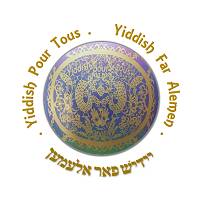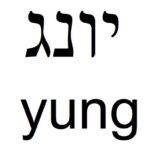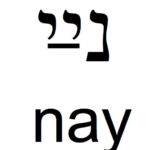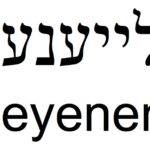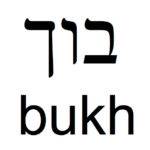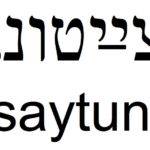DER ALTER MAN TRINKT DEM ZISN ZAFT
AN ALTER MAN TRINKT A ZISN ZAFT
DI YUNGE FROY LEYENT DI NAYE TSAYTUNG
A YUNGE FROY LEYENT A NAYE TSAYTUNG
DOS KLEYNE KIND LEYENT DOS NAYE BUKH
A KLEYN KIND LEYENT A NAY BUKH
YUNG = יונג = JEUNE = YOUNG
LEYENEN = לײענען = LIRE = TO READ
NAY = נײַ = NOUVEAU = NEW
DI TSAYTUNG = די צײַטונג = LE JOURNAL = THE NEWSPAPER
DOS BUKH = דאָס בוך = LE LIVRE = THE BOOK
Nous voyons à travers ces exemples comment se déclinent articles et adjectifs épithètes au nominatif (cas du sujet) et à l’accusatif (cas du complément d’objet direct), selon que l’article est défini ou indéfini
We can see with these examples how articles and adjectives epithets are declined in the nominative (case of the subject) and the accusative (case of the complement of direct object), according to whether the article is definite or indefinite
AU MASCULIN
Nominatif article défini = DER + adjectif+ER
Nominatif article indéfini = A + adjectif+ER
Accusatif article défini = DEM + adjectif+N
Accusatif article indéfini = A + adjectif+N
AU FÉMININ
Nominatif article défini = DI + adjectif+E
Nominatif article indéfini = A + adjectif+E
Accusatif article défini = DI + adjectif+E
Accusatif article indéfini = A + adjectif+E
AU NEUTRE
Nominatif article défini = DOS + adjectif+E
Nominatif article indéfini = A + adjectif
Accusatif article défini = DOS + adjectif+E
Accusatif article indéfini = A + adjectif
Comme vous pouvez le constater, la déclinaison est identique que l’article soit défini ou indéfini pour le masculin et le féminin. C’est seulement dans le cas du neutre qu’on trouve une différence selon que l’article est défini ou indéfini.
As you can see, the declination is the same whether the article is definite or indefinite for the masculine and feminine genders. Only in the case of the neutral gander, will we find a difference according to whether the article is definite or indefinite.
Corrigé des exercices de la leçon 21/Corrected exercises in lesson 21
Remettre dans le bon ordre/Put in the right order
1. ZEY SHLOFN VAYL ZEY ZEYNEN KRANK.
2. HOT IR LIB VEN DI TEY IZ HEYS?
3. IKH BIN NISHT GEZUNT, IKH BIN FARKILT
4. DOS KIND IZ NISHT ALT
Compléter par le bon article défini/Complete with the right definite article
1. DER FRUKHT
2. DI MILKH
3. DOS VASER
4. DI TATE MAME
5. DOS KIND
Traduire en yiddish/Translate in yiddish
1. GUT MORGN
2. VOS MAKHSTU?
3. IKH BIN FARKILT.
4. IKH HOB LIB TSU TRINKEN KALT VASER
5. DI TATE MAME KUMEN MORGN.
Ecoutez votre audio ici/ listen to your audio here
https://soundcloud.com/user-369999034/yiddish-lecon-29
:
